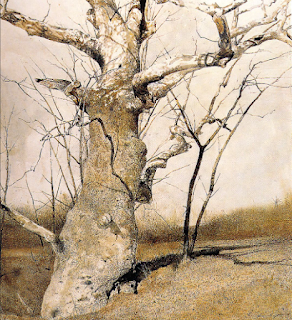 |
| Red April (1970), Sam Gilliam |
In honor of my wife's birthday, let's pay tribute to April flowers in art. We can all appreciate the lively Spring colors in Red April (1970) by African American color field painter and abstract expressionist, Sam Gilliam (1933-2022). Often compared to Rothko and Pollock, Gilliam experimented with sculptural 3D elements in his paintings by using stretched, draped, and wrapped canvases. Another of my favorite abstract expressionists and color field painters is Helen Frankenthaler. Both Frankenthaler and Gilliam are known as lyrical abstractionists.
 |
| Daisies (1919), Matisse |
Going back to the early 20th century, French artist and Fauvist, Henri Matisse painted Daisies (1919). Considered to be a double flower, the daisy is our first April flower. Matisse's vaseful of flowers contains Shasta daisies. His later 1939 version, The Daisies, depicts the more traditional wild white and yellow flowers, and there's a nude in the upper left corner, but you are free to access the link.
 |
Girl with a Bouquet of Daisies (1897),
Jules-Cyrille Cavé |
Girl with a Bouquet of Daisies (1897) by Jules-Cyrille Cavé (1859-1949) shows a young girl holding a bunch of wild daisies. I'm not sure but the floral wreath on her head may contain sweet peas, which also represent April flowers.
 |
Vase with Daisies and Anemones
(1887), Van Gogh |
While Vincent Van Gogh is famous for his paintings of sunflowers and irises, he also painted daisies and anemones. The daisies are in Vincent's favorite color yellow and prominently displayed in a beautiful turquoise vase. The textured background has Van Gogh's characteristic brushstrokes.
 |
Drawing, Sweet Peas (1875),
Henrietta Benson Homer |
Daisies are naturally resistant to many plant diseases and pests. Like daisies, sweet pea leaves contain antifungal properties. Here's a drawing of sweet peas by Henrietta Benson Homer (mother to Winslow Homer). I wonder if Mamma Homer ever tried doing embroidery or cross stitch.
My brother and I used to draw wildflowers using pen-and-ink and watercolors. As a kid, I remember watching Popeye and occasionally seeing him follow around his troublemaker foundling son, Swee' pea. Like other characters (Wimpy, Poopdeck Pappy, and Sea Hag) in E.C. Segar's comic strip Thimble Theater, he only made rare appearances.
 |
| Freya (November 2022) |
In Norse mythology, the daisy is considered to be the sacred flower of Freya, the goddess of beauty, love, and fertility. My wife's sister has a beautiful dog named Freya. Here's a photo of her that I captured this past Thanksgiving. I love how the beautiful pattern in her fur repeats in the striped fabric of the sofa.
Symbolizing innocence and purity, an old Celtic legend says that God sprinkled daisies over the earth to cheer the parents up, after the death of an infant.
Daisy, from the comic strip Blondie, was the Bumstead's Cocker Spaniel/Poodle/Terrier.
 |
The Madonna of the Carnation
(1478), Leonardo da Vinci |
In the 19th century, parents would encourage their children to get up after a fall by saying, “ups-a-daisy”. My Nana would have said, “oopsy daisy” or “whoops-a-daisy”. My wife has received lots of encouragement from family and friends during her recent illness. Her favorite flower is the carnation, which has become a symbol of motherly love. Christians believe that they grew from the Virgin Mary’s tears as she watched Jesus carry the cross.
I hope you've enjoyed this tribute to my wife, April flowers, and the artists and artworks that celebrate them.



















